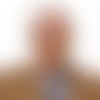I get asked all the time what I consider the best NFL draft of all time. Most people quickly point to 1983, when six Pro Football Hall of Famers went in the first round, seven overall.
No doubt, that draft which produced John Elway, Eric Dickerson, Bruce Matthews, Jim Kelly, Dan Marino, Darrell Green and Richard Dent was impactful. But I'm not so certain the 1964 draft wasn't better.
As VP of player personnel with the Dallas Cowboys at the time, I might be biased. But certainly, by sheer numbers, it was superior. Eleven Hall of Fame members were taken in the 1964 draft, a record that still stands.
I was part of a Cowboys front office that nabbed three of them: CB Mel Renfro, WR Bob Hayes and QB Roger Staubach. The disappointing part still for me is we should have had five.
The record books will show we took Scott Appleton, a tackle out of Texas, with the fourth overall pick that year, behind Dave Parks and Hall of Famers Bob Brown and Charley Taylor. The fact is, we were drafting for the Steelers at that spot after trading the pick for All-Pro WR Buddy Dial, Bobby Layne's favorite target in Pittsburgh.
I loved Paul Warfield, the halfback and track star from Ohio State who I thought we could convert into a terrific receiver. In fact, we had a pre-draft verbal agreement with Warfield and were all set to take him with the fourth overall pick.
So when coach Tom Landry approached me in the lobby of the Sheraton Hotel in Chicago the morning of the Dec. 2, 1963 draft (back then we held the draft before the NFL season was finished, so the 1964 draft actually took place in 1963) and informed me that he and GM Tex Schramm had decided to trade the pick to Pittsburgh for a veteran receiver, I was personally devastated.
But I understood coach Landry's logic: Dial was a good receiver who could help us immediately; Warfield still needed to learn a new position.
We never saw much fruit from this trade as Dial's three-year career with the Cowboys was marred by injuries. Warfield went to Cleveland at pick No. 11, a fitting start for a career that ended down the road in Canton.
While I say I feel like we should have had five Hall of Famers from the 1964 draft, in reality we had no chance at Dave Wilcox. Without a third-round pick, we had identified Wilcox as our fourth-round target. We were so confident we were going to get Wilcox that we had Red Hickey, the former San Francisco 49ers head coach and one of my scouts at the time, sitting with Wilcox during the draft, ready to sign him on the spot. Unfortunately, San Francisco took the Oregon defensive end with the first pick in the third round, 15 spots ahead of where we selected halfback Perry Lee Dunn, whom we unsuccessfully tried to convert into a safety.
With all that said, it's hard to look back at the 1964 draft with much regret, considering the three Hall of Famers we got, including Renfro, whom we almost didn't.
I liked Mel as a player and person. We had an accidental meeting in the Portland airport after his junior year at Oregon. Both of our flights were cancelled due to fog and we ended up sharing a ride to Seattle. Because the NFL was often bidding with the American Football League for the same players, pre-draft relationships with prospects were vitally important. Mel and I had become pretty good friends.
Shortly before the draft, Mel had informed me that he had become so distraught over the Kennedy assassination that he slammed his fist through a glass medicine cabinet and had sliced his wrist. The injury scared off many teams, but we stayed the course with him. Still, we had to make sure the medicals checked out. So when it was our turn to pick in the second round, we called an orthopedic surgeon from Portland named Dr. Slocum, and sent him to Eugene to examine Renfro. Six hours later, we received the news we were hoping for and took him.
No team was "on the clock" back then. There was no clock. That's why we had six hours to get all the information we needed before taking Renfro. The entire 20 rounds of the 1964 draft took almost 22 straight hours; the first round was more than eight hours long for just 14 picks.
I think Vince Lombardi would have preferred today's format. He was clearly frustrated by the time we took on the Renfro selection, coming over to our table at the Sheraton, laughing, and saying, "What happened? Did your computer break down?" (Coach Lombardi later inquired about our "computer club." When we told him our admissions fee, he declined.)
We missed on quite a few picks in that draft, but so did a lot of teams in those days. But when we hit, we hit big. At 2 o'clock in the morning, we added Hayes in the seventh round (one pick ahead of Bill Parcells) and before the sun rose took Staubach in the 10th.
Three Hall of Fame players, the second most ever taken by a team in a single draft, one behind Pittsburgh's 1974 draft haul of Lynn Swann, Jack Lambert, John Stallworth and Mike Webster.
But our three were all true game-changers. And so was that 1964 draft.
Follow Gil Brandt on Twitter _@GilBrandt_.












